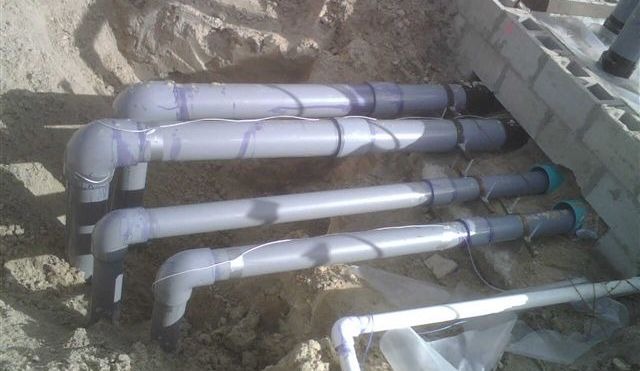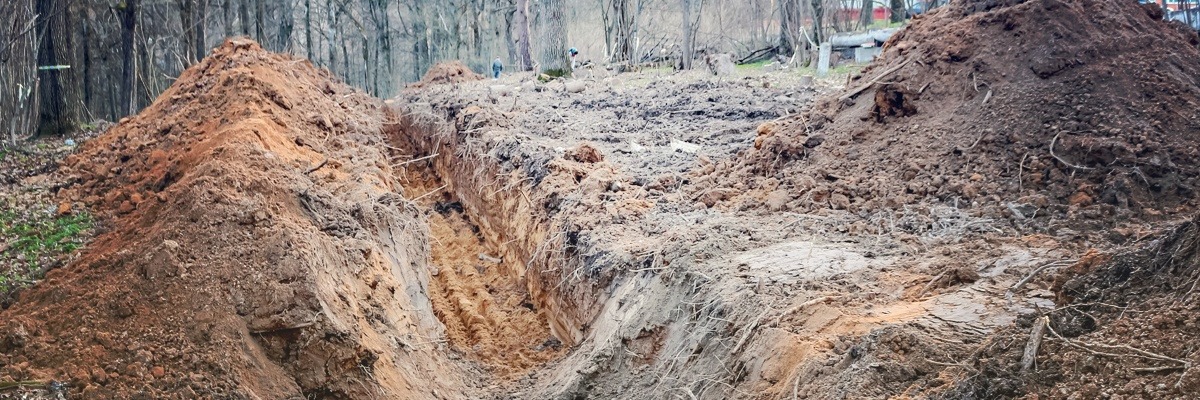Can Corzan CPVC Piping Be Buried?
This post was originally published in November of 2017, but has been updated to be more comprehensive, including a video of CPVC during an impact test.
Whether used for general drainage, fire suppression, mining, or another industrial application, CPVC piping systems may need to be run underground.
Most concerns about underground CPVC usage arise from incorrect assumptions about CPVC’s physical properties, specifically impact resistance. Underground piping is exposed to:
- Various-sized rocks and other abrasives.
- The weight of the backfill and any surfacing material.
- Vehicle and/or machinery traffic (depending on the application).
- Corrosives found within the soil.
- Fluctuating, potentially extreme temperatures.
These potentially harmful conditions beg the question: Can CPVC piping be buried?
Corzan® pipes and fittings, in fact, are an excellent choice for underground use. They comply to standards ASTM D2321 Standard Practice for Underground Installation of Thermoplastic Pipe for Sewer and Other Gravity-Flow Applications and ASTM D2774 Standard Practice for Underground Installation of Thermoplastic Pressure Piping, and we’ve curated some additional considerations that prove CPVC piping systems’ aptitude in underground installation.
CPVC’s Physical Traits
There are a few important attributes that allow CPVC to withstand underground installation and use.
- Corrosion resistance: Corrosive matter in the ground, such as bacteria, can eat away at piping material–especially metal piping–and shorten its working life. However, CPVC is inherently inert to a wide range of soil pH levels and salts found underground, ensuring a longer lifespan for your piping system. See how compatible Corzan CPVC is with more than 400 chemicals by viewing our Chemical Resistance Table.
- Abrasion resistance: Abrasive backfill can scratch or gouge some pipes, but Corzan CPVC is engineered to offer excellent abrasion resistance, limiting the chance of debris weakening the pipe’s pressure bearing capabilities. Read more about how abrasion resistance is assessed here.
- Joining methods: Most pipe and fitting joining methods require threading, welding or mechanically attaching the sections together, and the seams are typically the weakest part of the piping system. Conversely, with CPVC, piping and fittings can be solvent cemented together. The solvent cement fuses the two pieces, creating one continuous piece of material at the molecular level. This gives the joint the same physical properties as the piping itself.
- Impact strength: Corzan CPVC has proven to offer the highest impact strength of any CPVC compound. Our material’s impact resistance comes from a combination of material strength and low modulus of elasticity. This combination of strength and flexibility results in fewer cracks and dents. The following video shows Corzan CPVC withstanding 300ft-lbs of impact while generic CPVC fails during an impact test.
Additional Considerations for Underground CPVC Use
To guarantee the longevity and quality of your system, it’s essential that the piping be properly installed. Keep the following in mind:
- Trench design: The trench should be dug only as wide as necessary for pipe installation, and at least 12 inches below the frost line. It should also meet any above-ground load and trench bedding requirements–you can discuss this any time with the Corzan Industrial Systems support team or your piping manufacturer.
- Trench preparation: If large rocks or other barriers exist in the trench bed, they must be covered with tamped earth or bedding to protect the pipes.
- Piping assembly: Once the piping has been assembled and the solvent cementing curing process has begun, it’s crucial to prevent joint stress or movement of any kind. This rule holds true whether the pipe was assembled inside or outside of the trench.
- Laying of pipe: If the piping was assembled outside of the trench, it can be moved into the trench after allotting adequate time for curing. However, the piping must not be rolled or dropped into the trench. Instead, joined piping should be supported while it’s gently placed into the proper position underground.
- Backfilling: Utilize a backfill material that is free of rocks and has a particle size of ½ inch or smaller. Cover the piping with 6 to 8 inches of backfill. Then, compact the backfill with vibratory or water flooding methods.
- Thermal expansion and contraction: Temperature differences between day and night can cause expansion and contraction of the pipe. Snaking the pipe will allow for this expansion and contraction without putting stress on the joints as they cure. This is of particular importance when joining small diameter pipe (<3” diameter) in a hot environment. Test the expected expansion in your industrial application with our expansion calculator.
Other Ideal Underground Use Cases for CPVC
Due to CPVC's broad chemical resistance, high temperature and pressure rating, and its consistency in underground applications, the material is favored for:
- General drainage
- Fire suppression
- Mining
- Heating, ventilation and air conditioning (HVAC) systems
- Hydronics, which transfers liquid for heating and cooling systems (e.g. heated floors, snow melt systems for sidewalks and roads or industrially for transfer lines)
- Other industrial systems

For more installation guidelines, see our engineering design manual. To speak with a Corzan CPVC piping expert about this or any other question related to installation, don’t hesitate to contact us.


